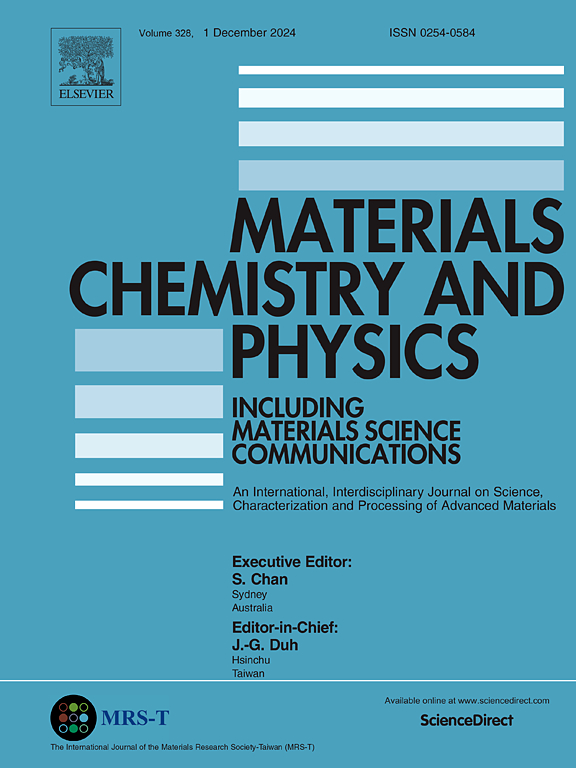Zn/Sn变化对矫形植入物用t4处理Mg-0.5Ca-Zn-(Sn)合金显微组织、力学性能和生物腐蚀的影响
IF 4.3
3区 材料科学
Q2 MATERIALS SCIENCE, MULTIDISCIPLINARY
引用次数: 0
摘要
研究了Zn和Sn对300 MPa压力下t4处理挤压铸造Mg-0.5Ca-Zn -(Sn)合金组织、力学性能和耐蚀性的影响。分别对mg -0.5 ca - 1zn (A)、Mg-0.5Ca-1Zn-0.5Sn (B)、Mg-0.5Ca-1Zn-1Sn (C)和Mg-0.5Ca-2Zn-1Sn (D)合金进行T4固溶热处理,并用XRD和FE-SEM进行表征。t4处理形成Mg2Zn11, Ca和Sn保留在固溶体中,有利于固溶体强化。Zn和Sn含量的增加提高了合金的力学性能,Mg-0.5Ca-1Zn-1Sn和Mg-0.5Ca-2Zn-1Sn合金具有更高的显微硬度(分别为74.8±3.9 HV和84.8±3.6 HV)和抗压强度(分别为247.75±6.44 MPa和282.61±7.91 MPa)。在汉克平衡盐溶液(HBSS)中的腐蚀试验表明,sn改性合金的腐蚀速率较低,Mg-0.5Ca-1Zn-1Sn和Mg-0.5Ca-2Zn-1Sn的初始腐蚀电流密度最低(分别为0.328±0.011和0.240±0.002 μA cm - 2)。腐蚀后分析证实,Mg-0.5 ca - 2zn - 1sn合金形成致密的Mg(OH)2层,其次是Mg-0.5 ca - 1zn - 1sn,这有助于提高合金的耐腐蚀性。这些结果表明,Sn改性,t4处理的Mg-Ca-Zn合金,特别是Mg-0.5Ca-1Zn-1Sn和Mg-0.5Ca-2Zn-1Sn(含1wt % Sn),具有优异的机械强度和耐腐蚀性,使其成为生物可降解骨科植入物的有希望的候选者。本文章由计算机程序翻译,如有差异,请以英文原文为准。
Impact of Zn/Sn variations on the microstructure, mechanical properties, and biocorrosion of T4-Treated Mg-0.5Ca-Zn-(Sn) alloys for orthopaedic implants
This study investigates the influence of Zn and Sn on the microstructure, mechanical properties, and corrosion resistance of T4-treated, squeeze-cast Mg-0.5Ca–Zn-(Sn) alloys fabricated under 300 MPa pressure. The alloys—Mg-0.5Ca–1Zn (A), Mg-0.5Ca–1Zn-0.5Sn (B), Mg-0.5Ca–1Zn–1Sn (C), and Mg-0.5Ca–2Zn–1Sn (D)—underwent T4 solution heat treatment and were characterized using XRD and FE-SEM. The T4-treatment resulted in the formation of Mg2Zn11, with Ca and Sn retained in solid solution, contributing to solid solution strengthening. Increased Zn and Sn content enhanced mechanical properties, with alloys Mg-0.5Ca–1Zn–1Sn and Mg-0.5Ca–2Zn–1Sn demonstrating higher microhardness (74.8 ± 3.9 HV and 84.8 ± 3.6 HV, respectively) and compressive strength (247.75 ± 6.44 MPa and 282.61 ± 7.91 MPa, respectively). Corrosion tests in Hank's Balanced Salt Solution (HBSS) indicated that Sn-modified alloys exhibited lower corrosion rates, with Mg-0.5Ca–1Zn–1Sn and Mg-0.5Ca–2Zn–1Sn showing the lowest initial corrosion current densities (0.328 ± 0.011 and 0.240 ± 0.002 μA cm−2, respectively). Post-corrosion analysis confirmed that Mg-0.5Ca–2Zn–1Sn alloy developed a compact Mg(OH)2 layer, followed by Mg-0.5Ca–1Zn–1Sn, contributing to improved corrosion resistance. These results highlight that Sn-modified, T4-treated Mg–Ca–Zn alloys, particularly Mg-0.5Ca–1Zn–1Sn and Mg-0.5Ca–2Zn–1Sn with 1 wt% Sn, exhibit superior mechanical strength and corrosion resistance, making them promising candidates for biodegradable orthopaedic implants.
求助全文
通过发布文献求助,成功后即可免费获取论文全文。
去求助
来源期刊

Materials Chemistry and Physics
工程技术-材料科学:综合
CiteScore
8.70
自引率
4.30%
发文量
1515
审稿时长
69 days
期刊介绍:
Materials Chemistry and Physics is devoted to short communications, full-length research papers and feature articles on interrelationships among structure, properties, processing and performance of materials. The Editors welcome manuscripts on thin films, surface and interface science, materials degradation and reliability, metallurgy, semiconductors and optoelectronic materials, fine ceramics, magnetics, superconductors, specialty polymers, nano-materials and composite materials.
 求助内容:
求助内容: 应助结果提醒方式:
应助结果提醒方式:


